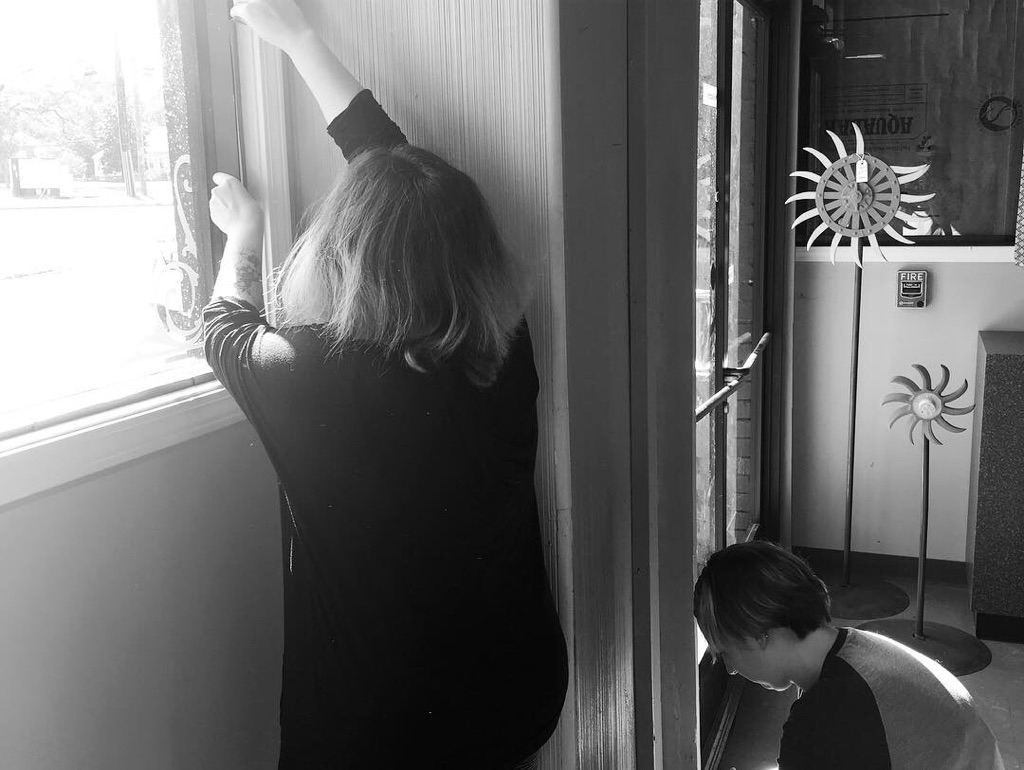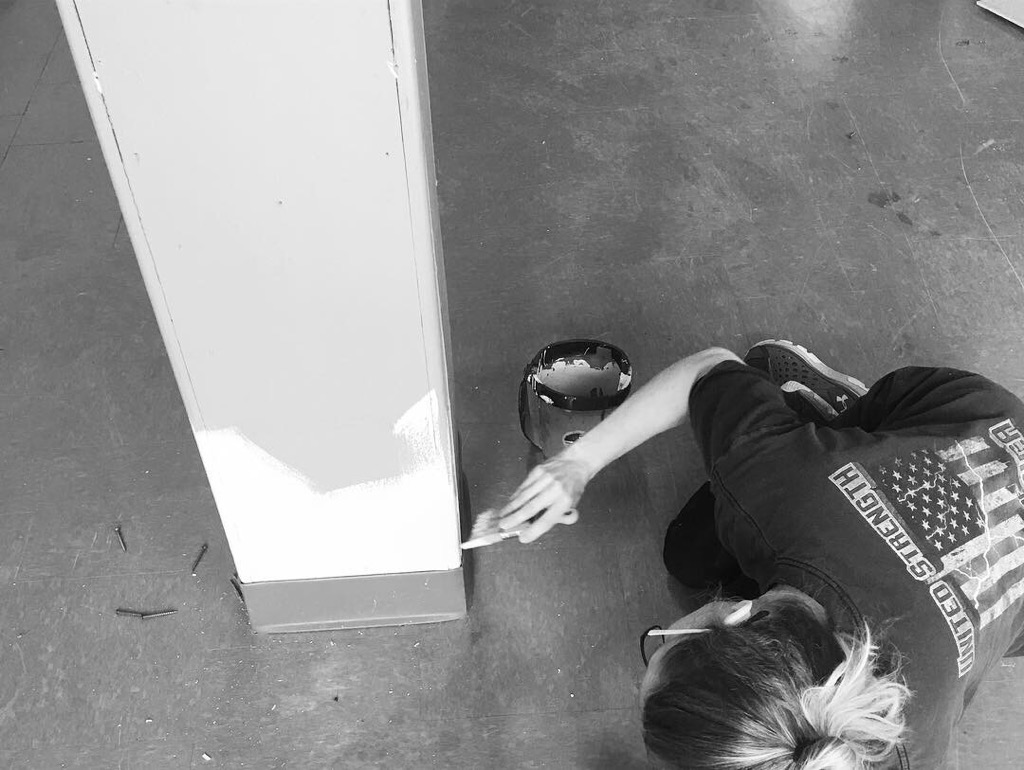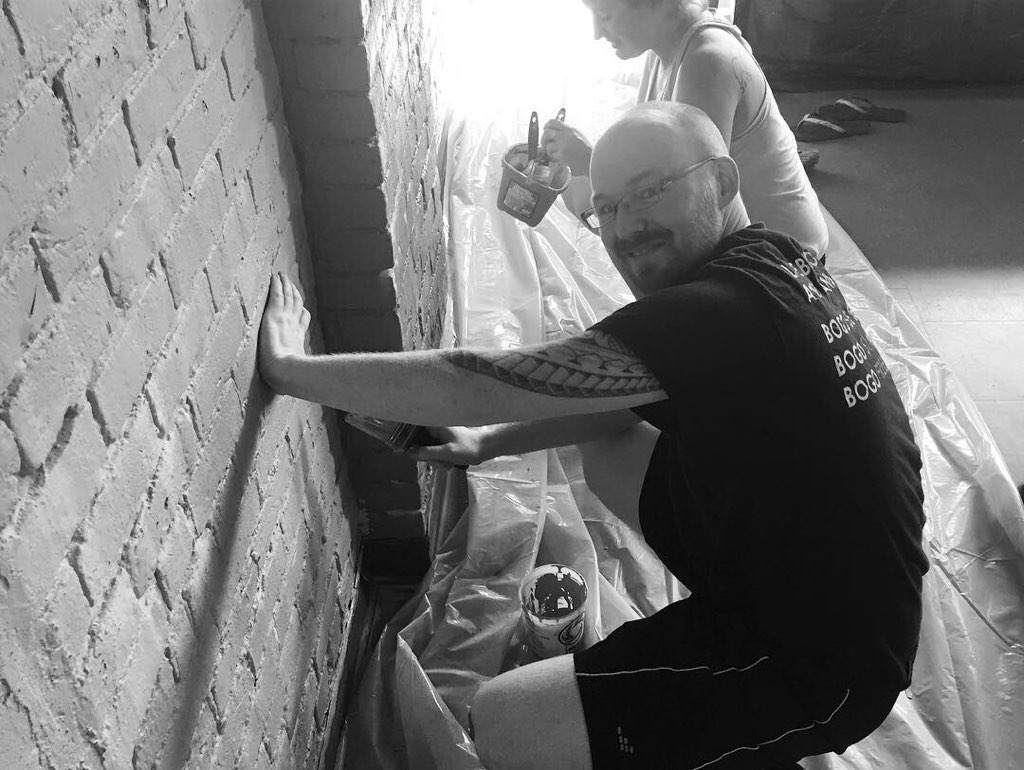I moved to Jackson, TN with my husband almost three years ago because my husband’s job transferred him. We did not expect this so soon, but life is circling back again. My husband was recently promoted to manage a larger operation in New Orleans, so in the next few months we will be moving to NOLA.
Friendship: While we are excited to move to the Big Easy, we are sad to move away from our friends in Jackson. My primary motivation for organizing Art Collective meetings was to find friends, and I look forward to continuing the friendships that have grown out of Art Collective. We hope that our Jackson friends will visit New Orleans, so that we can go for beignets and explore the city.
Leadership: A big concern my husband and I discussed about moving was: what will the future of Art Collective be? From its inception, I have tried to communicate that Art Collective is not about me, it is about what we do as a community. My aim has always been to fill a role, not to take on a status. I view my role as having “taken a lead’ instead of being “the leader” of Art Collective. Leadership and service are open to every member of Art Collective.
Mission: My hope for Art Collective is that it will continue to be a democratic, community-oriented artist-driven arts leadership and service network that thrives, grows, changes, and spreads to other cities over time. I hope to build an Art Collective in New Orleans, LA, and connect Jackson, TN Art Collective Members to art opportunities in New Orleans. Let’s take this show on the road.
ART COLLECTIVE
NEW ORLEANS
Movement: I’ve said this before, but it’s important to remember that when we talk of creating and supporting an art scene in Jackson and building Art Collective, we’re talking about starting a movement. Every great art movement has been an effort among artists taking action with a unified vision to change the world and make a mark. Andy Warhol is credited with saying “in the future everyone will be world-famous for 15 minutes.” Today, We live in a time where big, amazing things happen all the time, and we have the power to access to information without much effort. Videos go viral. Memes meme. But without any sense of cohesion, new information and interesting ideas just become noise.
Process: So how do we, as artists, create meaning, beauty, and change the culture of Jackson? I think the answer is in two parts: first, invest our time and energy into connecting with each other as we work together; then, invite others to see and become part of what we have started together.
Sustainability: But how do we sustain it? To build a sustainable art community, it will take thoughtful collaboration, long-term planning, strong partnerships, clear communication, and a big-picture mindset. It’s not just enough to start projects or shows as singular events. As time passes and Art Collective members face challenges and embark on new projects, we will need to continue to support each other in the work that we are doing.
Strength: With so many artist-leaders working together the future of Art Collective Jackson, TN is bright. In the first three months we have opened and closed a group show, three of our members have signed leases and have begun working next door to each other in studio space inside the old City Hall building by the Ned, and our members have pooled the valuable resources of time and effort to make our dreams into reality.
CoArts: The biggest project Art Collective members are working on right now is collaborating to create a Co-op Art Center (“CoArts”) in Bemis, which will become a contemporary art gallery, offer art classes, host performing arts events, and feature a local coffee shop startup. This space was once the site of the historic Bemis general store (i.e. the Bemis Mercantile Company) and still has great bones: large industrial brick walls with original rustic wooden beams on the ceiling. The massive space is lit by large open windows across the front and simple, modern industrial lighting throughout.
Bemis Art Center
Photo by: Wendy Hailey Kim
Dreams: For years, Matt Marshall has wanted to see his property at 203 South Missouri Street in south Jackson transform into a creative space. So when Art Collective member Lendon Noe heard other members describing their dream to find a brick-and-mortar haven for making and showcasing art, she decided to invite Matt to come to the next meeting.
Mobilization: Ever since that follow up meeting, Cynthia Sipes and Wendy Hailey Kim have taken the lead with Matt on that initiative; they have begun fundraising and have organized workdays for Art Collective members to transform the space into an art gallery and creative hub. The CoArts team hopes to get the space open for arts events by Spring 2019. And they are also planning the first community event— a juried show with the theme “Identity.”
Unity: Everyone involved in the CoArts initiative is working to build a unified vision for the space. In addition to renovating the space and planning the show, Cynthia and Wendy are enrolling in the winter session of the COstarters at theCO to make plans for the CoArts gallery and classes. And Kasie Smith and Daniel Palmer, who are working on starting the coffee shop startup that will operate in the CoArts space are enrolling in the same COstarters session. They hope that through this program they will create solid a framework and concrete business plans for their organizations together.
Invitation: Art Collective members have made very big moves in a very short amount of time. And there is more to come! At the next Art Collective meeting, Tuesday October 30, 2018 from 5:30-6:30 P.M., we will discuss how we will move forward with Art Collective, and work through the transition ahead. We hope that if you haven’t been able to make a meeting recently or if you have never come to a meeting before, that you will attend and take part in this important conversation. We hope to see you there!


































